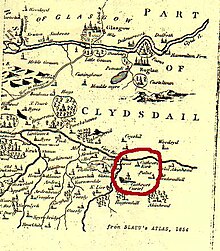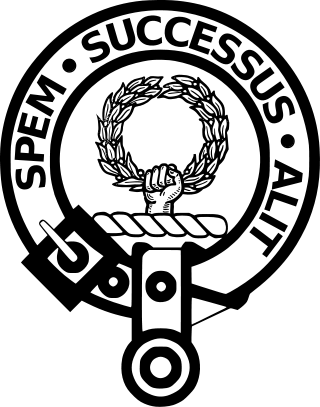
Clan Ross is a Highland Scottish clan. The original chiefs of the clan were the original Earls of Ross.

Clan Campbell is a Highland Scottish clan, historically one of the largest and most powerful of the Highland clans. The Clan Campbell lands are in Argyll and within their lands lies Ben Cruachan. The chief of the clan became Earl of Argyll and later Duke of Argyll.

Duke of Atholl, named after Atholl in Scotland, is a title in the Peerage of Scotland held by the head of Clan Murray. It was created by Queen Anne in 1703 for John Murray, 2nd Marquess of Atholl, with a special remainder to the heir male of his father, the 1st Marquess.

Earl Cathcart is a title in the Peerage of the United Kingdom.
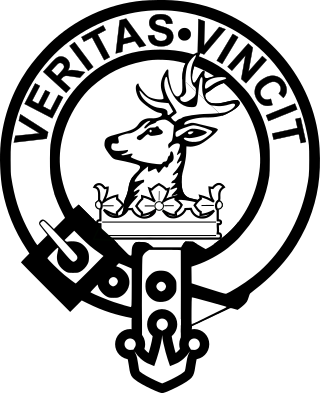
Clan Keith is a Highland and Lowland Scottish clan, whose Chief historically held the hereditary title of Marischal, then Great Marischal, then Earl Marischal of Scotland.

Clan Sinclair is a Highland Scottish clan which holds the lands of Caithness, the Orkney Islands, and the Lothians. The chiefs of the clan were the Barons of Roslin and later the Earls of Orkney and Earls of Caithness.

Clan Murray is a Highland Scottish clan. The chief of the Clan Murray holds the title of Duke of Atholl. Their ancestors were the Morays of Bothwell who established the family in Scotland in the 12th century. In the 16th century, descendants of the Morays of Bothwell, the Murrays of Tullibardine, secured the chiefship of the clan and were created Earls of Tullibardine in 1606. The first Earl of Tullibardine married the heiress to the Stewart earldom of Atholl and Atholl therefore became a Murray earldom in 1626. The Murray Earl of Atholl was created Marquess of Atholl in 1676 and in 1703 it became a dukedom. The marquess of Tullibardine title has continued as a subsidiary title, being bestowed on elder sons of the chief until they succeed him as Duke of Atholl.

Clan Drummond is a Highland Scottish clan. The surname is rendered "Druimeanach" in modern Scottish Gaelic.

Clan Carnegie is a Lowland Scottish clan.

Clan Cochrane is a Scottish clan of the Scottish Lowlands.

Clan Macnab is a Highland Scottish clan.

Clan Erskine is a Scottish clan of the Scottish Lowlands.
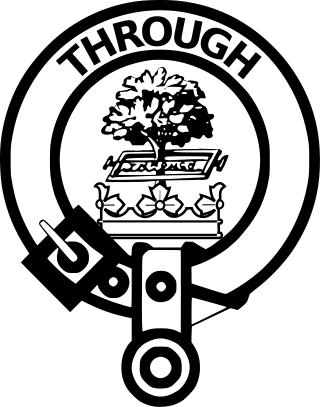
The Clan Hamilton, or House of Hamilton, is a Scottish clan of the Scottish Lowlands.

Clan Sempill is a Scottish clan of the Scottish Lowlands.

Clan Lindsay is a Scottish clan of the Scottish Lowlands.

Clan Oliphant is a Highland Scottish clan.

Clan Haldane is a Lowland Scottish clan.

Clan Maitland is a Lowland Scottish clan.

Clan Stewart is a Scottish Highland and Lowland clan. The clan is recognised by Court of the Lord Lyon; however, it does not have a Clan Chief recognised by the Lord Lyon King of Arms. Because the clan has no chief it can be considered an armigerous clan; however, the Earls of Galloway are now considered to be the principal branch of this clan, and the crest and motto of The Earls of Galloway's arms are used in the Clan Stewart crest badge. The Court of the Lord Lyon recognises two other Stewart/Stuart clans, Clan Stuart of Bute and Clan Stewart of Appin. Clan Stuart of Bute is the only one of the three clans at present which has a recognised chief.
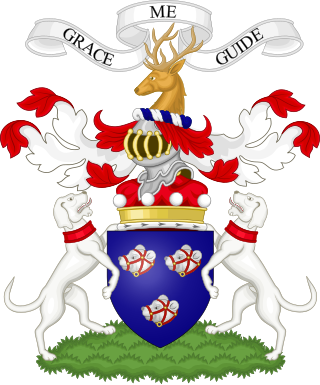
Clan Forbes is a Highland Scottish clan from Aberdeenshire, Scotland.


